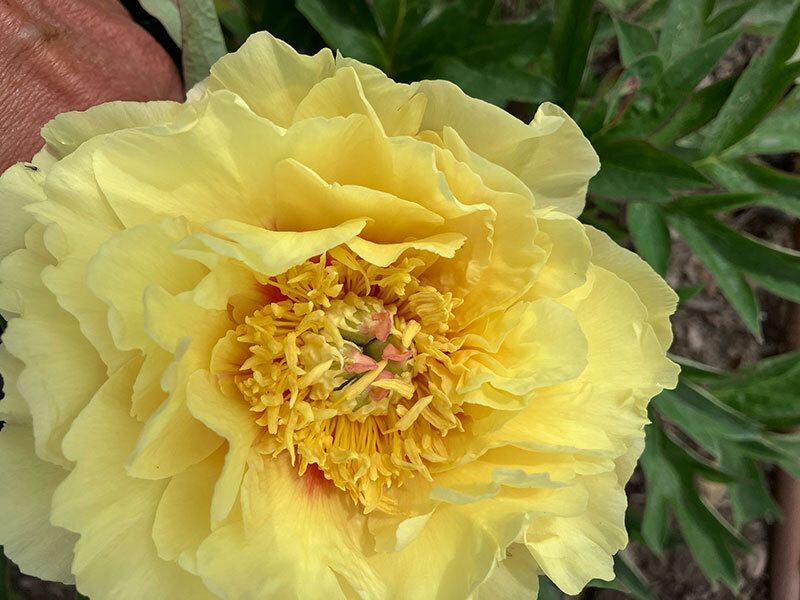
It’s time to apply the first generation Codling moth spray. Spinosad or neem are some of the least-toxic options. Malathion and permethrin are some of the hard pesticide options. Spray in the evening. It’s still not yet quite time to spray for wormy cherries for the cherry fruit worm (usually when cherries start to show their first color). The least toxic options are spinosad and pyrethrum. Malathion is the hard pesticide option. Follow your spray of choices label as when to reapply and it is always a good idea to rotate between 2 different sprays so they don’t develop a resistance. People who live at higher elevations such as in the rattlesnake should wait another week to spray.
Elm and birch leafminers are starting to pupate and leave behind the tan colored blotches they have made on elm and birch leaves. There should be no need to treat for Leafminers now.
Tent caterpillars are present in increasing numbers. They are at the stage where they will be too large to effectively treat them with Bt (Bacillus thuriengensis). Juniper scale is now hatching and in the crawler stage, now is the time to treat.
It is time to apply treatments to healthy pine trees to prevent Mountain Pine Beetle attack. You can apply the pheromone called Verbenone (available in Missoula at Rob Dillon Tree Service) or spray the trunks of pine trees with carbaryl up to where the trunk diameter is LESS THAN 5” around. Keep pine trees well watered when the weather is hot and dry.
It’s time to apply preventative Bronze Birch borer sprays now. Spray trunks of healthy birch trees as high as possible with a liquid carbaryl spray. This treatment is not effective on trees that are already infested. Poplar borer adults are starting to emerge from aspen trees and will soon be laying eggs in new aspen trees. This is the time to apply trunk insecticide sprays to healthy aspen to prevent poplar borer attack.
Aphid populations are increasing. Check trees and shrubs, such as plum, cherry, caragana, maples, and roses now. Treat aphids with insecticidal soap or neem plus insecticidal soap if populations are high.
Leafhoppers are still present on roses, apples, and Virginia creeper causing white stippling of leaves. Check leaf undersides for aphid-like leafhoppers. Insecticidal soap plus Pyrethrin is the least toxic option. Rose curculios may also be feeding on rose foliage. Curculios are dark colored weevils that tear chunks out of rose leaves. Neem is the least toxic option for rose curculio.
Slugs and earwigs are having a great time eating small seedlings and eating holes in leafy greens. You can trap slugs by setting out several flat boards, shingles or damp newspapers. Check under these traps the next morning and kill any slugs that are hiding. You can drown slugs in soapy water, crush them, or spray them with household ammonia diluted to a 5 percent or 10 percent solution. Traps containing beer or other fermenting food are popular. You can purchase commercially available slug traps or make your own. Sink jars, cans, pans or similar containers into the ground so the top is level with the ground (some commercially available traps are placed on the ground). Pour beer or a water and yeast mixture (one teaspoon of yeast to three ounces of water) or similar fermenting liquid into the container. Slugs are attracted to the odors, fall in and drown. A key element of an earwig management program is trapping. Place numerous traps throughout the yard, hiding the traps near shrubbery and ground cover plantings or against fences. A low-sided can, such as a cat food or tuna fish can, with 1/2 inch of oil in the bottom makes an excellent trap. Fish oil such as tuna fish oil is very attractive to earwigs, or vegetable oil with a drop of bacon grease can be used. These traps are most effective if sunk into the ground so the top of the can is at soil level. Dump captured earwigs and refill cans with oil.
Other common types of traps are a rolled-up newspaper, corrugated cardboard, bamboo tubes, or a short piece of hose. Place these traps on the soil near plants just before dark and shake accumulated earwigs out into a pail of soapy water in the morning. Earwigs can also be dropped into a sturdy plastic bag and crushed. Continue these procedures every day until you are no longer catching earwigs.
Wilting spruce tree terminals (top branches) can mean White Pine Weevil larvae are feeding inside the tip branch. Remove and destroy wilted, browning spruce tips as soon as you see them.
We’re seeing some disease problems now as a result of recent disease infection periods, including Western Gall rust on pines, aspen leaf spot and blight, cedar apple rust, peach leaf curl, fireblight, black knot, and powdery mildew. Sulfur or copper is the least toxic option for aspen leaf spot and blight and other fungal diseases. Keep irrigation water off of leaves, branches and stems to avoid further disease infection when the weather dries. Copper is the least toxic option for bacterial diseases such as Fireblight.
The wet weather has caused fungal and bacterial disease symptoms on garden plants. Check tomato, potato, cuk and squash leaves for circular, brown spots or irregular dark spots and dark, curled leaf margins. If present, keep irrigation water off of leaves and stems. Flea beetles are active now. Keep flea-beetle-eaten plants well watered and fertilize weekly with nitrogen to help them outgrow flea beetle attacks.
Check out the peony gardens at the U of M, they are in bloom this week!
